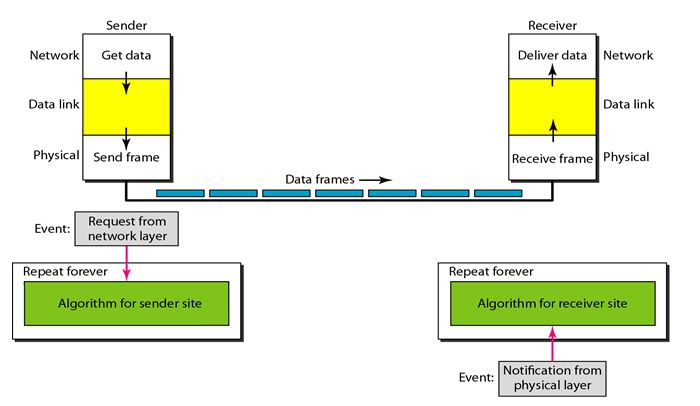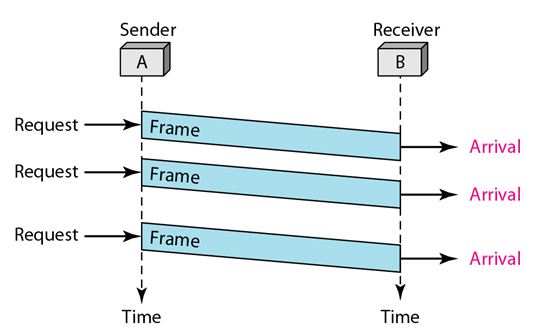Simplest Protocol:
Simplest Protocol is one that has no flow or error control and it is a unidirectional protocol in which data frames are traveling in only one direction-from the sender to receiver. We assume that the receiver can immediately handle any frame it receives with a processing time that is small enough to be negligible. The data link layer of the receiver immediately removes the header from the frame and hands the data packet to its network layer, which can also accept the packet immediately.
Design:
There is no need for flow control in this scheme. The data link layer at the sender site gets data from its network layer, makes a frame out of the data, and sends it. The data link layer at the receiver site receives a frame from its physical layer, extracts data from the frame, and delivers the data to its network layer. The data link layers of the sender and receiver provide transmission services for their network layers. The data link layers use the services provided by their physical layers (such as signaling, multiplexing, and so on) for the physical transmission of bits. The following figure shows a design.
You May Also Like:
Framing and Framing Protocols
Stop-and- Wait Protocol
Stop and Wait With ARQ Protocol
Go-Back-N ARQ Protocol
The sender site cannot send a frame until its network layer has a data packet to send. The receiver site cannot deliver a data packet to its network layer until a frame arrives. If the protocol is implemented as a procedure, we need to introduce the idea of events in the protocol.
The procedure at the sender site is constantly running; there is no action until there is a request from the network layer. The procedure at the receiver site is also constantly running, but there is no action until notification from the physical layer arrives. Both procedures are constantly running because they do not know when the corresponding events will occur.
The following figure shows an example of communication using this protocol. It is very simple. The sender sends a sequence of frames without even thinking about the receiver. To send three frames, three events occur at the sender site and three events at the receiver site. Note that the data frames are shown by tilted boxes; the height of the box defines the transmission time difference between the first bit and the last bit in the frame.
You May Also Like:
Selective Repeat ARQ Protocol
Piggybacking Protocol
HDLC Configurations,Transfer Modes and Different Types of Frames
Control Fields of HDLC Frames
Back to DCN Questions and Answers



